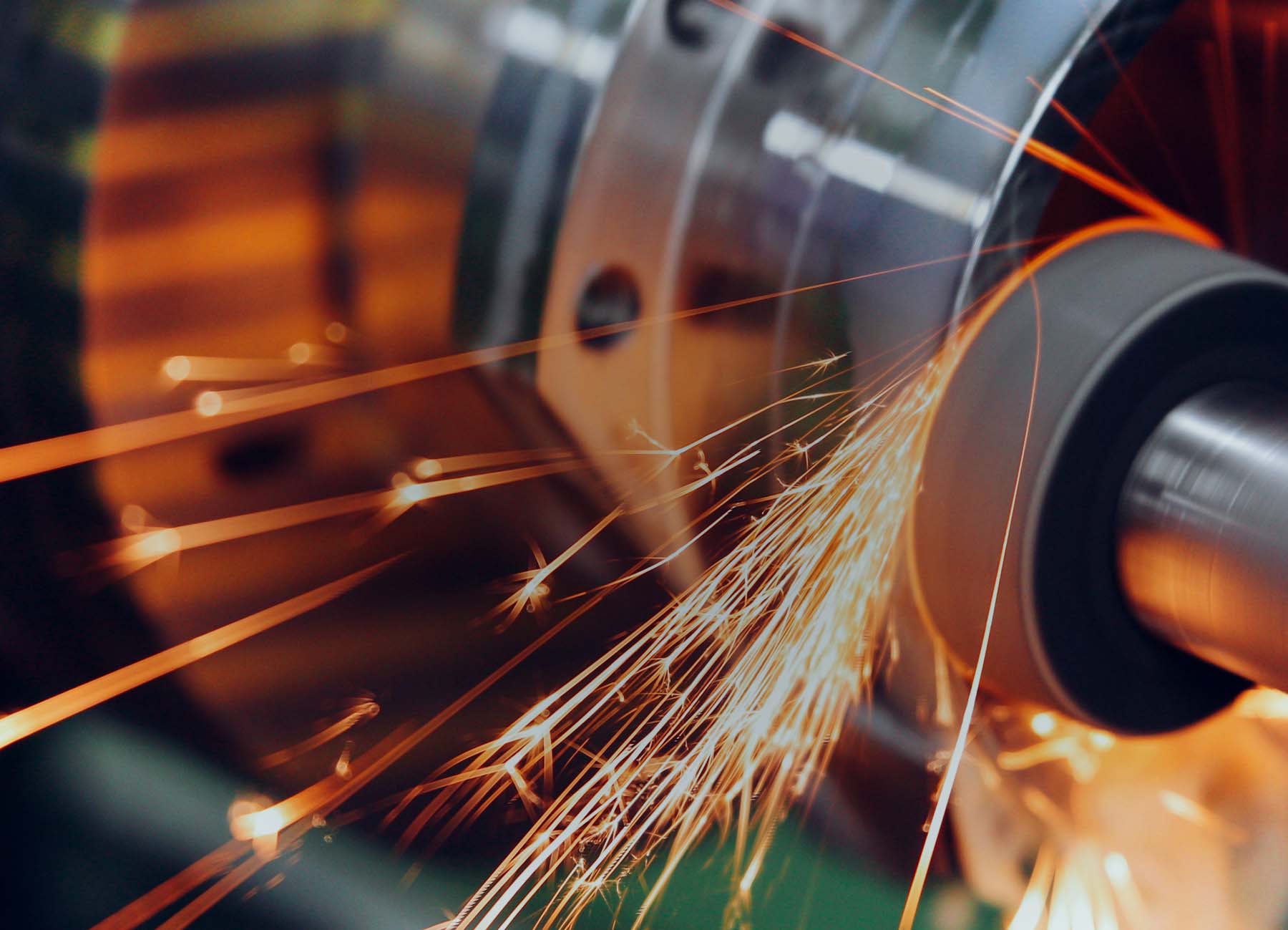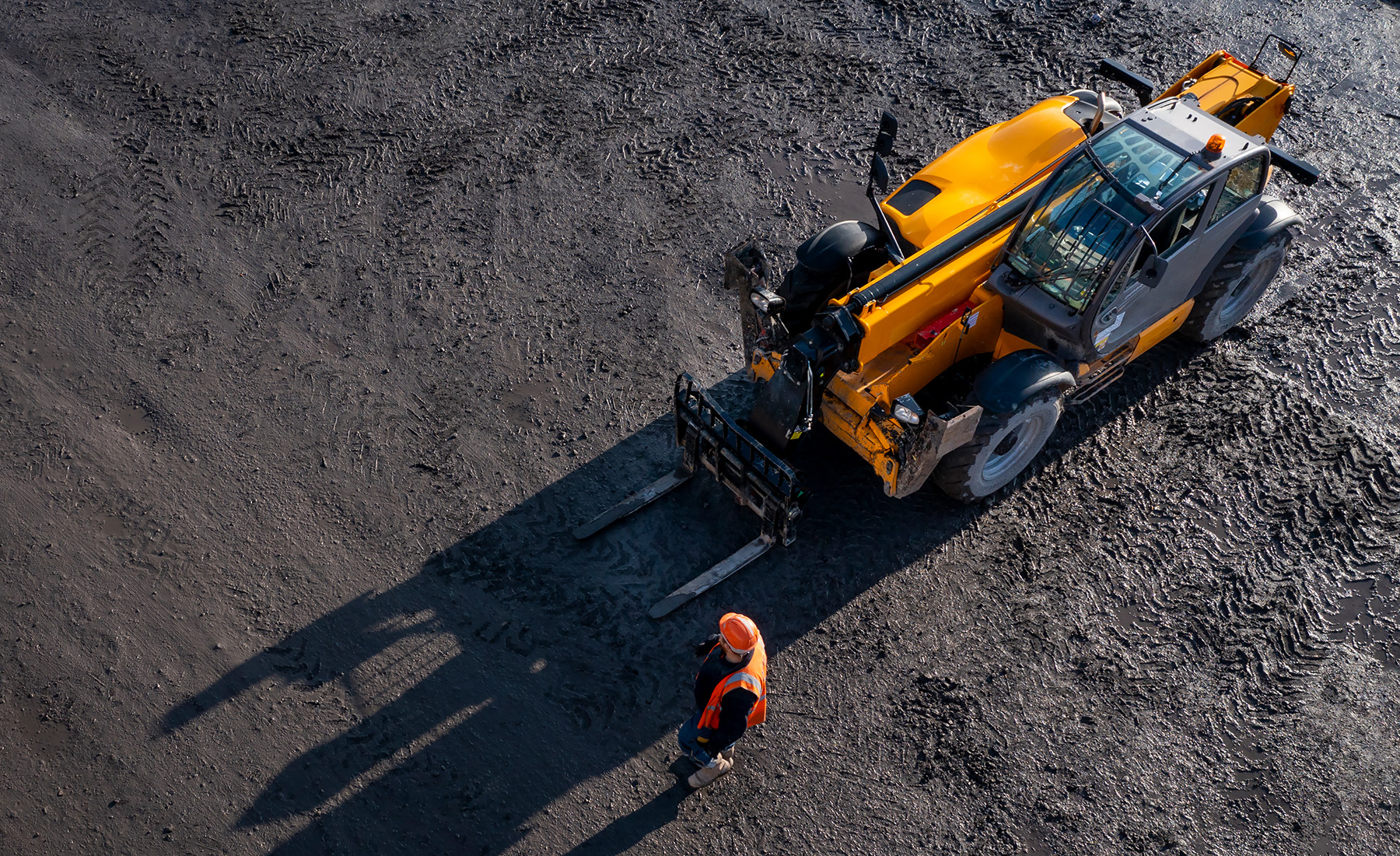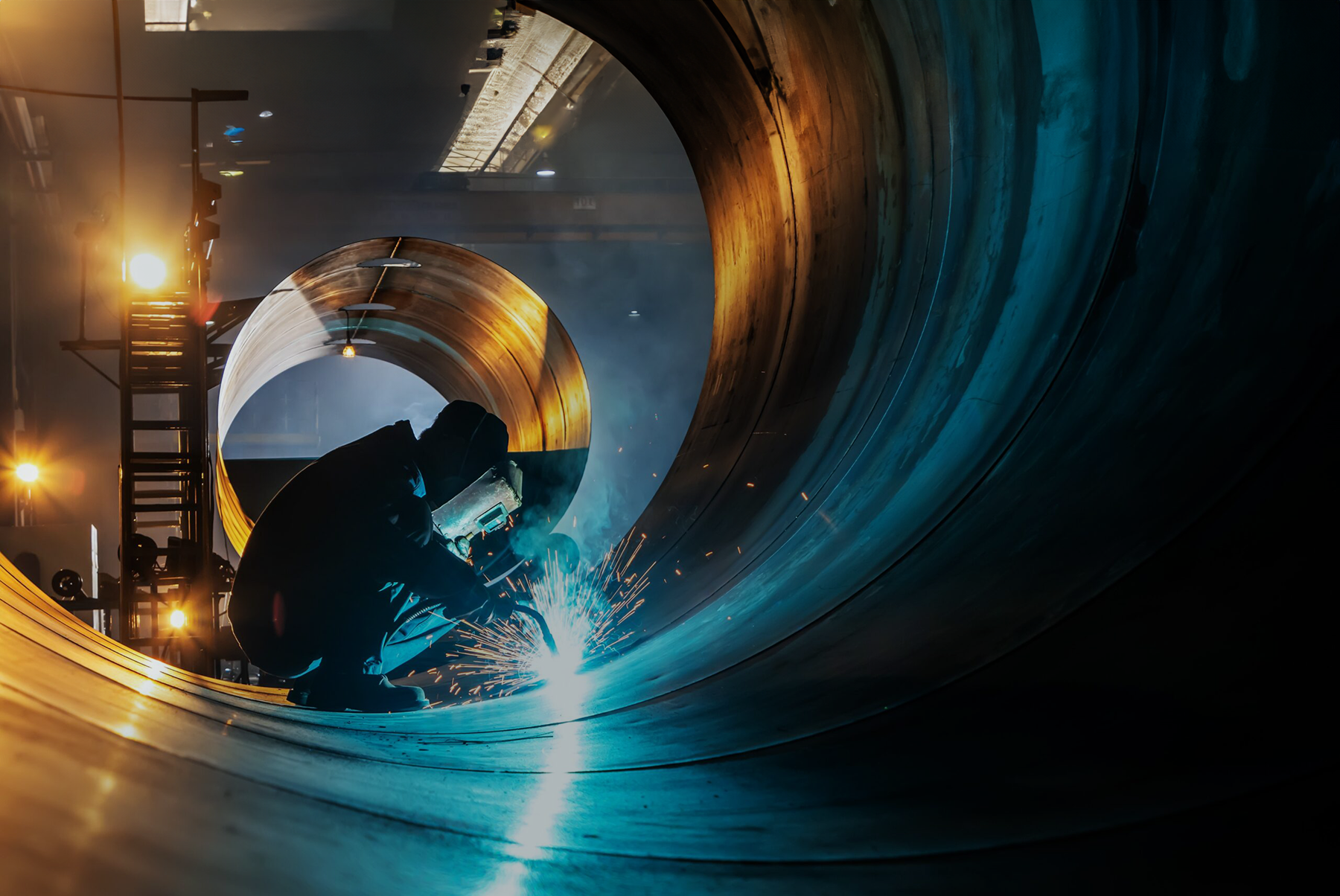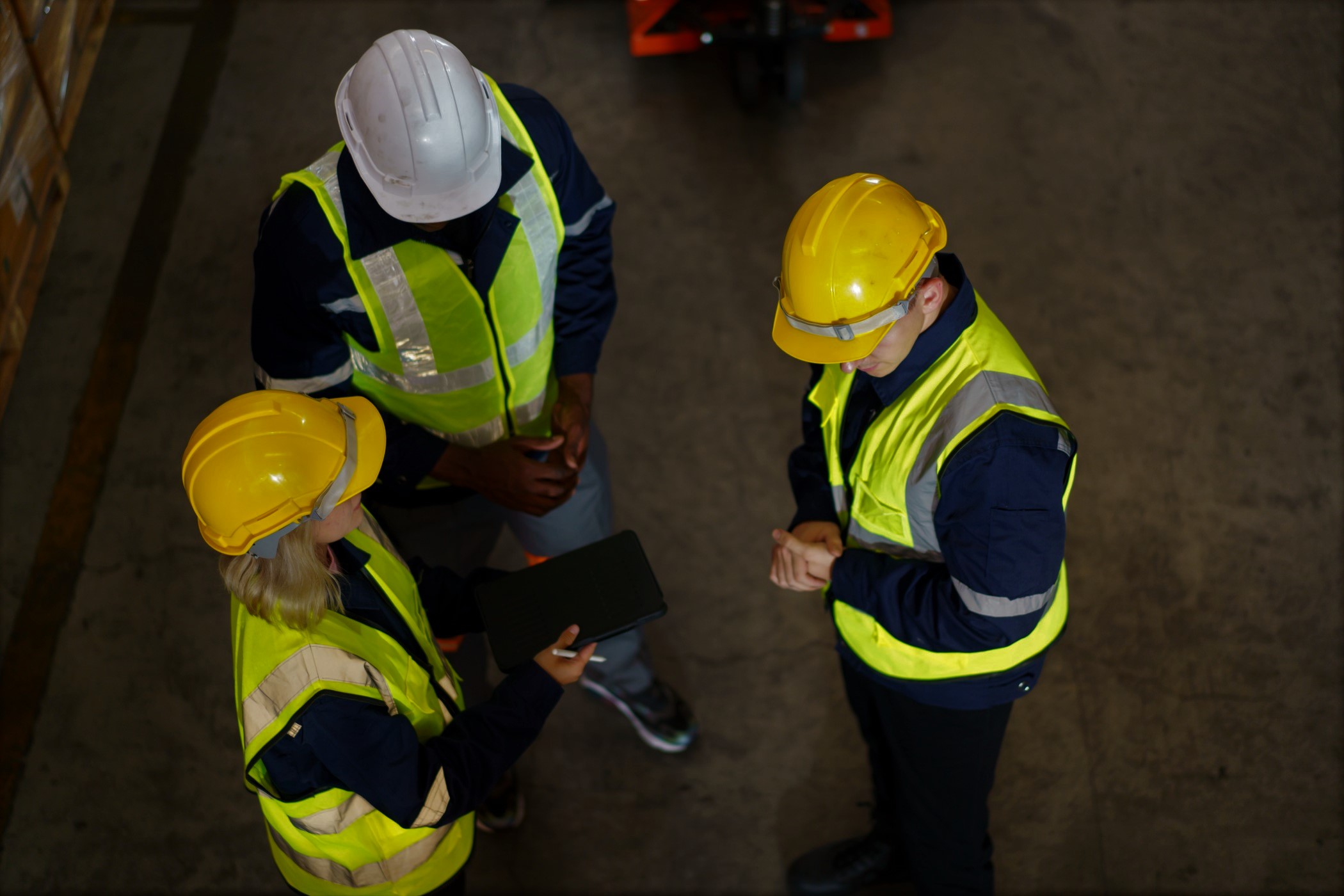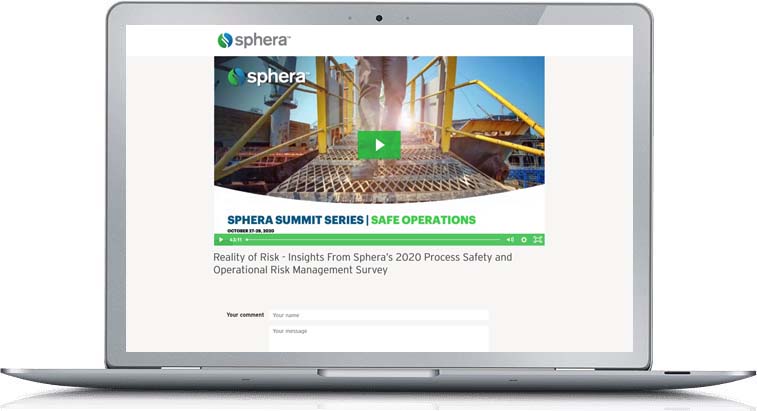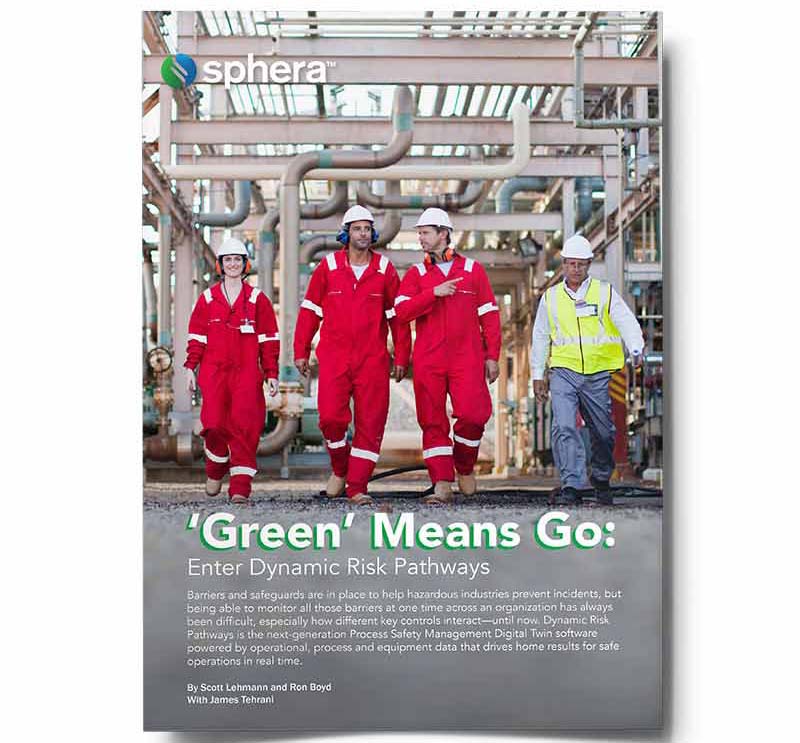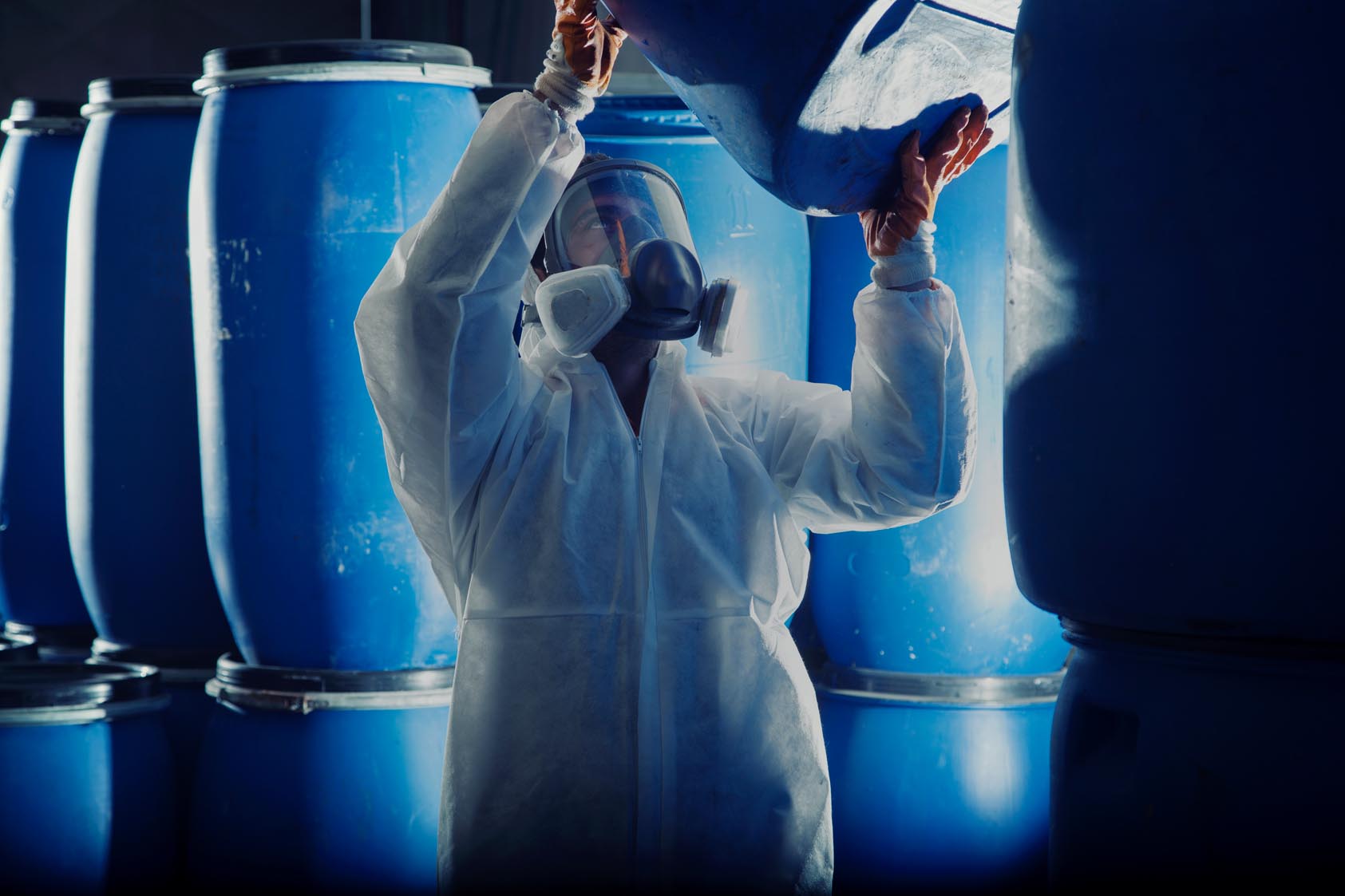In this three-part series, Andy Bartlett, Sphera’s solution consultant for Operational Risk Management, details lessons learned from incidents he has seen during his 40-plus-year career. Listen to parts one, two and four.
The following is an edited transcript of the podcast.
James Tehrani:
Welcome to the SpheraNow podcast. I’m James Tehrani Sparks Editor-in-Chief. Today on the program. I’ll be speaking with Andy Bartlett, Sphera solution consultant for Operation Risk Management. This is part three of what we call Andy’s Almanac on Accidents. As a process safety expert, with more than four decades of experience, let’s just say Andy has seen some things. Just a quick recap, in part two, Andy discussed some of his experiences in Saudi Arabia, and we’ll be continuing to talk about that today. Today, we’ll be talking about how process safety manifests itself in the field. Thank you so much for joining me today, Andy.
Andy Bartlett:
Thanks for the introduction James. Great to talk to you again, and let’s hope we can get some information out there that might be helpful to people.
James Tehrani:
Perfect. So let’s pick up where we left off, where you were in Saudi Arabia and when you were just starting to learn what makes a top-notch safety program.
Andy Bartlett:
Yeah, the company I was with, started out with a safety program that was like most of the peoples and in 2005, they brought in a safety management system, which was a major shift in the company. It was the introduction of expectation focus safety management in place, of the old 1980s style of prescriptive safety. So during this period, we all in the company learned a lot because we had to change how we looked at things, on the safety side.
James Tehrani:
And what do you mean by expectation? Can you explain that to our audience?
Andy Bartlett:
Well, take, for example, the operations procedures, which is part of process safety. The operations procedures in most plants, if you went into them, they’d be in a well-thumbed book, they might be years old, and there was a notice out there somewhere that you’re supposed to use the operations procedure when you were starting up the plant. So in an expectations system, you would have an up-to-date procedure that had been reviewed and updated annually, and the expectation was that you would follow it, and that you would take notations as you followed it, and there was proof there that the procedure had been followed, and that was filed away. We weren’t yet in the stage of electronic procedures, on computers, we’d go out in the field with a clipboard, with pages of the procedure that we were going to follow, so we could tick the boxes off. That was the difference.
James Tehrani:
So that was the first time you were really keeping track of safety and maintenance and things like that?
Andy Bartlett:
Well, the whole safety management system, it’s split into elements, and each element has its own expectations. So you have risk management, the maintenance section would be to follow the procedures that were set out for maintenance, and that when you issued a permit, that the follow-up was exactly as per the procedure, and people didn’t take shortcuts and cause incidents. So that was the difference.
James Tehrani:
I see. And when did you start thinking about adding KPIs to safety?
Andy Bartlett:
Well, the KPIs in safety had been with us a long time. So I think back to my days when I was a foreman. I was held accountable for how many permit violations, how many incidents in my area, the investigations and the follow-up recommendations, how long it took to close them. That was always there, but the KPIs, we were always looking backwards. Things that had happened. And the idea of process safety KPIs, that wasn’t there at that time.
Andy Bartlett:
But in 2005, we started to move to this expectation, the KPIs became a little bit different. We wanted to look at had you done your process hazard analysis on time? Were the recommendations closed in time? So you were looking at the big picture rather than little bits and pieces you would just say, “Right. I have a process safety system that’s embedded in my safety management system, and I have these elements that I need to be on top of.” And monthly we look at how we’re doing, are there any failures that point to weaknesses in these systems? It’s like the Swiss cheese and the holes, you know?
Andy Bartlett:
So once you start to say, “What are those holes? What are those weaknesses and how can we fix them? How can we prevent them and how can we prevent safety incidents from happening?” So that’s why you need KPIs. You can see where you’re going, and where you’ve been.
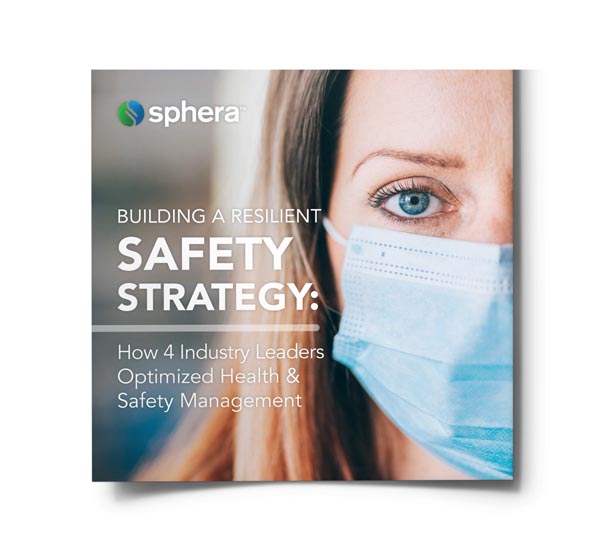
James Tehrani:
I see, OK, great. I know you participated in a number of surveys, due diligence surveys. Can you tell me a little bit about those and what that means for safety?
Andy Bartlett:
Yeah. When a company goes to buy another company, they want to know everything. The financial side of it is done by one team, the safety side’s done by another. Well, I took part in three surveys, and on each of them, I was on the safety side, in operations, not the corporate safety, but what I would call field safety. How safety is actually implemented in the field. You have a procedure which says, you do MOC this way, was it actually done? You issue permits to work this way, was that actually done? You issue isolations this way, was that actually done? So it took a knowledge of the right way to do things to go out and look and say, are they doing it correctly? So we would always find room for improvement and develop a plan, an improvement plan to bring them up to the standard that was required.
Andy Bartlett:
We were also looking at one of the big things on these due diligence services. Looking at the equipment condition, and where you have a pump, a tank, what’s the corrosion on it, when was it last surveyed. On one survey, we found a tank that was below minimum thickness. It was a pressure vessel and that was really dangerous. So we had to close that part down immediately. We told them, “You cannot operate this any longer. It needs to be fixed.” We looked at how the maintenance was done, preventive maintenance. Did they have a system? Was it done on time? Was there any backlog? Because backlog of maintenance is… In every incident that you investigate, you’ll find somewhere in that there will be something that wasn’t done on time.
James Tehrani:
Sure.
Andy Bartlett:
And it’s something that wasn’t operated correctly and some equipment that wasn’t looked after properly.
James Tehrani:
So it’s similar to, if you’re buying a building, you send in the inspector to check out all of the offices, to make sure everything’s in working order, and then you make a recommendation after you’ve completed your survey. Is it similar to that?
Andy Bartlett:
It’s similar to that. It’s like buying a car as well. You just don’t jump in a car and drive it away and give guy your money. You want to take it to-
James Tehrani:
But hopefully it’s more than kicking the tires.
Andy Bartlett:
… look at the rigs, look at the tires, there’s a whole list of stuff you want to go through.
James Tehrani:
And then what kind of recommendations do you make? Is it just that, I think you mentioned that something wasn’t safe and it needs to be fixed before the purchase can go through, or is it just, the purchase will go through anyways, but this needs to be fixed.
Andy Bartlett:
The purchase was going through because of government instructions. However, the thing was to work on how much it was going to cost to bring it up to the standard that was required.
James Tehrani:
I see.
Andy Bartlett:
And that becomes an issue if it’s too much money, because the purchase price has to be paid to somebody, and then as they bring it to standard, the price has to be paid by somebody, who’s got the money who’s going to pay, how much do you knock off the price that they asked for? Things like that.
James Tehrani:
So they could have still backed out of the deal if there were too many safety violations.
Andy Bartlett:
Well, in these particular ones I was involved in, two of them were going through anyhow, whatever the cost was. And the third one, the cost was so great that a separate company was formed to operate the facility, with a joint venture sharing.
James Tehrani:
So can you talk a little bit about incident investigations, and what are some of the critical steps that need to be taken after an incident has taken place?
Andy Bartlett:
Yeah. Part of my training was to be trained in incident investigation, and it was something I was very interested in. I liked doing it, not that I liked the incidents, but I like doing it. So the first thing is to get out there as quick as you can to the site, and preserve evidence. Second part is to make sure that everybody on the team is unbiased. There’s always, somebody who tries to get in there, who runs to the investigation in some way, and then you have to put your timeline in place, and you start to investigate the pieces, and you break the team up into the speciality such as, somebody is going to look at the safety side, somebody is going to run on the maintenance side, somebody will look at the engineering side, and you have to have a chairman who is strong enough to bring all this together.
Andy Bartlett:
One of the things, it still shocks me to this day is, I read about Flixborough happening, and management of change, and of course that was the first time I heard about it, the big, big chemical incident in the UK. But the majority of things, I wouldn’t say the majority, but a large number of incidents happening because changes were made, and they weren’t done properly, it’s still out there. And then the second one is recommendations, outstanding and left because they weren’t given a priority, they weren’t risk ranked, and the financial side of, “No, this is going to cost us money.” And you talked about KPIs, KPI after an incident, you had 20 recommendations. You always find some members of the receiving organization, they want to get the numbers down quickly.
Andy Bartlett:
So it’s always the low hanging fruit, or can rewrite a procedure. I can change how we do this, but the actual, when it comes to buying a piece of equipment that’s going to cost several million dollars, that tends to take time, the long lead time, so you want to get your 20 items down to where you’ll say, “I’ve got 80% of my items done.” But the other 20%, the 80-20 rule is usually where the stuff that’s going to hurt you the next time is hiding, you know?
James Tehrani:
Sure. And I know everybody wants to get to the actual incidents. So tell me a little bit about this period. I know you’re going through incident investigation training, and I understand there was a time in this period when you had to really put that to use. Can you talk to me a little bit about that incident?
Andy Bartlett:
Yeah. There was a tank being cleaned for turnaround. This was not a large tank, it was a medium-sized tank, slop tank, and of course you try and purge it the best you can, you wash it with water, and you try and get a gas rating to say there’s no explosive atmosphere inside, but on this particular tank that wasn’t possible, and there wasn’t anybody around in the plant to talk to, who had done this the last time, 10 years before, the whole personnel had changed, so we expected there would be problems.
Andy Bartlett:
So when the tank was opened up, there was a pile of black sludge in the bottom. So we knew from experience that you need to keep this stuff wet, because it may contain pyrophoric scale because the tank had got hydrocarbons that contain sulfur for it when it was being used. And at lunchtime, they turned the horse off, left the door open, everybody went for lunch, and just after lunch, of course it’s on fire.
James Tehrani:
Oh my goodness.
Andy Bartlett:
Yeah, big black, horrible, smelly fire. I guess the only thing to do with this is put the door back on, and fill it back up with water above the level of the fire to put it out. There’s no way you can fight it because the pyrophoric scale, once it’s touched the oxygen in the air, it goes on fire. So you have to take away the oxygen by covering it with water. It was interesting investigation, because we found out there was chemicals available, potassium permanganate was one of them, that you could put in the flush that would actually neutralize the pyrophoric scale. So we went back and we luckily we had some in the stores and we started up a flush and we got it under control, and we managed to… It had to be shuffled out by hand, men had to go in with we wheelbarrows and shovels and wearing breathing apparatus to shovel this stuff out and get rid of it. So that was-
James Tehrani:
How long did that all take?
Andy Bartlett:
It took several days, and of course one of the recommendations was not to leave the turnaround of the tank to 10 years the next time, to try and leave it to only five years, because over 10 years there was too much scale to really handle it safely.
James Tehrani:
Interesting. Also during that time, I understand that there were four refineries that set up a safety compliance teams to assist the team leaders. Can you tell me a little bit about that?
Andy Bartlett:
Yeah. Well, the refinery that I was at, the manager there had come back from his training in business management and safety management, as he was going up the line and he said, “I want you to form a safety compliance team.” And, I said, “OK.” And he pulled me out of the job I was in and he said, “Set up a safety compliance team, and your job will be to make sure that all of the procedures and processes are implemented in the field the way they should be.” And we started to do things a little bit differently to the way it had been done. We started to have some success picking up things that nobody knew about, and we were able to fix them before they came incidents, and of course we had five refineries in the group and the other four refineries, he sent people over to work with our team, and they set up these compliance teams in all the five refineries, and eventually that became the safety best practice team, the leaders from each team became members of the safety best practice team. So everything that we did was shared. And I was-
James Tehrani:
And is this what you would consider field safety?
Andy Bartlett:
Yeah, that was safety in the field. Take, for example, you go out and you do… One of the tricks I picked up, and I was able to teach was that when you go into a unit, you look down the unit and you say, “Right, what’s different and what’s the same?” And of course, where you had something that was different, you say, “OK, why is this different?”
Andy Bartlett:
Take, for example, what we call a plug, so where you have a small vent or a small drain, and you have a valve, then you would have a plug screwed into the valve, so that would make it a double isolation. So it was live under pressure, and you would find that there is a standard for these, which is what we call a bull plug, it’s a solid piece of steel, but there was lots of homemade ones hidden around the unit.
Andy Bartlett:
And of course, what had happened was over time people had run out, they had made themselves out of pieces of pipe, what the men had submitted for them. So it’s different. So why is it different? Did anybody give approval for this? Was the management of change done? Does the plug actually stand up to 150 pound pressure, or 300 pound pressure, depending on what the line is? And of course they didn’t. And then the other thing was finding homemade blinds. Where the blind had been damaged and they didn’t have the right materials, so they had made one and of course, the danger of homemade blinds, and it’s well-stated throughout the industry, is they tend to bend, and you can’t get them back out to flange when you need to. So we started to put these lessons learned together.
James Tehrani:
Just so I’m understanding this correctly, did you already have a checklist of things to compare the four different refineries, or is this something that you had to create as you went along?
Andy Bartlett:
We developed a checklist, with the help of our corporate safety, from all of the insurance service, so the refineries were insured with a company in London, out of Lloyds, and they would send somebody every two years, a team to look through them and they would find things wrong. And they would find one thing wrong and say, “This is probably … You need to review the rest of the plant, and look and see if this item is common, or just one off.” Well, a lot of times over the years, nobody ever bothered.
Andy Bartlett:
They fixed the one which was found out and said the item was closed. Again, low-hanging fruit. So when we put together a database with the help of our corporate safety of all the items that had being found in all the refineries over the last 10 years, and we made that into a checklist, and we went out and what we found was eye-opening. Take for example, there was a plug on a pump that we tried to be seal welded, the insurance people had pointed that out, and that it had been seal welded on that particular pump, and there was a recommendation that all of the pumps were checked.
Andy Bartlett:
And when we checked them, I think we found 150 pumps that hadn’t been seal-welded. So there was things out there that could jump out and hurt you in the future. So that was what I would call field safety. At that time I started to work on a degree with the Aukland University in the UK to try and learn more about safety, and, HSE Management was the degree I was taking, I started it then. I actually completed in 2011. So it took a while because I had to get the packages sent by post to do learning and then send the exams back and so forth. But I learned a lot that way, it was applied it in the field and then working with… I had some really good people on my team who were committed to making the plant safer, because they were working in that every day.
James Tehrani:
Definitely. And so, can you tell me about your thought process between field safety versus process safety management? When did that all come into play?
Andy Bartlett:
I got moved from that job in that refinery to working for the admin area under the vice president where I was the liaison for all five refinery compliance teams. And I was the best practice team leader. So it was my job to look at everything they did and say, “Oh, that should be shared with the others.” If they hadn’t recognized it, go out to every turnaround, see how they were handled in turnaround safety, which was something that we were already concerned about, especially after Texas City. And process safety was a question that was asked by the vice-president. He says, “Does our safety management system cover process safety?”
Andy Bartlett:
So I did him a little table and said, “Yeah, there’s the 14 elements, that’s where they’re under safety management system.” And he said, “OK, why don’t you go out and just look at process safety.” He said, “Put together a team and go out there.” So we went out and we actually did five refineries and some gas plants. It was 13 facilities we looked at, and we put together a questionnaire for each of the elements, and we had a member from each of the five refineries, plus the plant that was being looked at, and we’d do a little presentations and how things should be in these… We only did six elements on the first turnaround, and we came back and when we put the charts up, and what we found, we were shocked. On the MOC, there was a red line all the way through. MOC was not being followed in any of the facilities properly, even my own facility, which I had left, which was quite a shock to me, because I thought it was at the time, but it had gone backwards.
James Tehrani:
And there was no PSM software at this time.
Andy Bartlett:
No, no, there’s nothing. This was all done in spreadsheet, in Excel. We did have a very good IT department, and there was a female IT technician called Jenny, who helped me put together some stuff that we used to develop this online, so that people could… When we put the recommendations in the system, they could say, “OK, we’ve closed that recommendation.” And I would ask the market, “Send me a photograph.” Or I’ll come out and take a look at it, I did a lot of traveling by airplane, from one side of Saudi to the other, because I was then based on the east coast, and two of the refineries were on the west coast, oh, three refineries were on the west coast, one in the center. So we did have a little bit of software, but it wasn’t proactive, it was just for tracking.
James Tehrani:
Mm-hmm (affirmative). I’m curious though, what would you be able to do today that you weren’t able to do then with the software that’s available? Is there a few examples?
Andy Bartlett:
Yeah. With software that’s available today, such as the Sphera control of work, we will be able to map all these findings, and see what the risk levels were in the facilities, what deviation should be in place, such as, a management of change was implemented, the training wasn’t done, the drawings weren’t updated, so you would have a risk there because somebody could go to work on it, using the old drawings, somebody could go to operate it, who hadn’t been trained on how it operated now.
Andy Bartlett:
So yeah, I could use the software that’s available to look at the risk levels, and then instead of showing them on a spreadsheet, “This is where the risks are.” You could actually show them on a map. And I know from talking about this with people, since I’ve gone back to visit my ex-colleagues, when they see the map with risk levels on it, that really lights them up.
James Tehrani:
They said, “Wow, I wish I could have had this 20 years ago.” Right?
Andy Bartlett:
Yeah.
James Tehrani:
- So, when did you decide, I want to teach people about safety and that this is such an important topic, and I really want to share my wealth of knowledge. When did all that come about?
Andy Bartlett:
When we finished the first go around of our process safety review on the six elements that we looked at, we had a specialist on the team for each of the six elements. One of my friends was an engineer, he was very well known in the business for his reliability, another one was, I think he helped OSHA write some of the stuff on PSM, another guy who’d been a refinery manager in the States, each of us put together a training course. Mine was job safety analysis, because that was the one I’d done a lot of in my time, and we went out and we put together training courses. So when we went on the secondary review, we would stay there a few days and we would teach classes. Each of us would teach some classes on the people who needed to know that particular element of process safety. And people would tell you thinks during these classes that they hadn’t found out when you did the review. So that was also a good way of getting information.
James Tehrani:
Mm-hmm (affirmative). And it’s also probably a good way to learn from your students about some of the incidents they dealt with.
Andy Bartlett:
Yeah. People would tell you things that you didn’t know about.
James Tehrani:
They probably don’t want to know about it, but you need to know about it.
Andy Bartlett:
No, no. In our team, the more we knew about what was going on in the plant, the better we could look at how you could implement the Corporate Safety Program, because the Corporate Safety Program was written at a very high level, and the people out in the field dealing with safety, they’re educated to a specific level, but not the level I think that they were hoping would implement this program. You know?
James Tehrani:
Mm-hmm (affirmative). And I understand you published a number of articles, or studies in the 2000s. Can you tell me about one or two of those?
Andy Bartlett:
Yeah. The first one, it was in Florida, 2005, it was entitled, ‘If We Only Know What We Knew: Defining the Corporate Memory,’ And that was from… When we started to do these checklists for the insurance survey, what was amazing was, what was out there that was already in the company, but it had never been put together. And because we didn’t have the computing power that we have today, this stuff was scattered all over the place. When we started to put together, we virtually had a book on how to review the plant, how to better prepare for permits to work, and how to look at the process safety, the management of change, the training, the incident investigation, the emergency response, which was another thing we got involved in. So that was the first paper I had put together and presented.
Andy Bartlett:
The second one was in Bahrain 2010, ‘Refining Process Safety: Keys to a Successful Program.’ And this was how we had done the program, which a lot of people were interested in, how we put together this process safety review program, what successes we’d had, where things hadn’t gone wrong, and how we’d had to fix things. Looking at the training side, people didn’t know a lot about process safety at the bottom end of the scale. The people out there, the sharp end, the people who were exposed to fires, gas, things like that. They’d never been taught about process safety. And I think the CCPS now they have a program where all engineers are taught process safety. So, things have moved on since then. The third paper I published was in Abu Dhabi, 2010, Reliability & Safety Hand in Hand to protect our Assets.
Andy Bartlett:
And this was about working with the maintenance, which I learned from working with reliability people that looking at reliability, what they find in the fields, such as bad actors, why are they bad actors? why do they fail? And what you can do to prevent failures in field safety that would affect the reliability of equipment. So, that was a paper.
Andy Bartlett:
And by last year in Saudi Arabia, I was transferred to the worst performing department, to rewrite their safety program though. I was given an extra year after the retirement date, and I would spend a year there rewriting the program, getting it all up to the level of the better performing facilities. And I always remember when I went to the first safety meeting, and it was exactly as I explained earlier, they would say, “OK, we had this incident, there was 20 recommendations and we’ve closed 18.”
James Tehrani:
- What about the two you’ve got left?
Andy Bartlett:
Well, “Oh, we need this, we need that.” It was always… And those were the ones with the high risk. So I said, “OK, there’s a problem here. You’re not risk-ranking your recommendations.” And that was an eye-opener to the manager and the management team was… Risk wasn’t a thing that was talked about in those days as such. It was talked about the PHAs, and you’re designing a plant, but actually field risk.
James Tehrani:
So before then there weren’t risk rankings?
Andy Bartlett:
It was something that was talked about but hadn’t been done, but we were able to bring in a risk ranking on recommendations, and it was taken up corporate-wide, that all recommendations were risk ranked. So that the key was to low your risk by implementing the recommendations that were the higher risk. And in the past, it was always, “Take the low hanging fruit and go for the better numbers.” So they were more interested in bringing the percentages down than were in bringing the risks down. That was the difference. Now it’s the other way round, it’s all focused on risk.
James Tehrani:
I see. And I know we’re running out of time here, but I’m very curious about safety culture. When did you start really considering safety culture as a key factor in the safety process?
Andy Bartlett:
That’s an interesting question. So there’s five refineries in one department, I would say the one admin department. Each of those five refineries was a different company at one time. So when you went and you looked at the safety culture, one example was one refinery, the permits to work were issued by the safety people, and another refinery, they were issued by the fire department, and now in another refinery, they were issued by the operations people. And the isolation. Some had single lock isolation, some had double lock isolation. So they had been taught different things, and to bring all of that together into one safety culture, with five different companies, was a massive ask. And it took a lot of years because what you had to do was, the trainees that were coming up to replace the people who retiring, they were all trained the same way.
Andy Bartlett:
So eventually over time, you would replace people who said, “I’ve always done it this way, it’s OK.” With people who’d say, “No, this is the right way, this is the way I was taught.” So safety culture is out there, it takes a lot to change it, and I think that’s why the management of change was always one of the most difficult ones. People thought, “Why do I have to go through all this rigmarole, to make a change? We do this all the time, we maintain it. We know that fits that operation. Now we know we can do that.”
James Tehrani:
Cool. Andy, this was another great podcast, and I know this was supposed to be a three-part series, but what do you think about coming back and doing at least a couple more of these? I feel there’s so much more to talk about. I’d love to talk to you more about some of that, and maybe talk about some historical incidents too. I think that would be really interesting for our listeners.
Andy Bartlett:
Yeah. It’s good to have a session on… back in the UK, I’m working for the Western company, I’m doing stuff that people out there will help them in the future. And of course the incidents, I work pretty closely with the CCPS, I’m a member of the technical committee for the Middle East, and I have some good examples to share.
James Tehrani:
Perfect. We will set that up for 2021. Well, Andy, it was a pleasure as always talking to you and thank you for taking the time to talk with us today.
Andy Bartlett:
OK, thank you, James.

